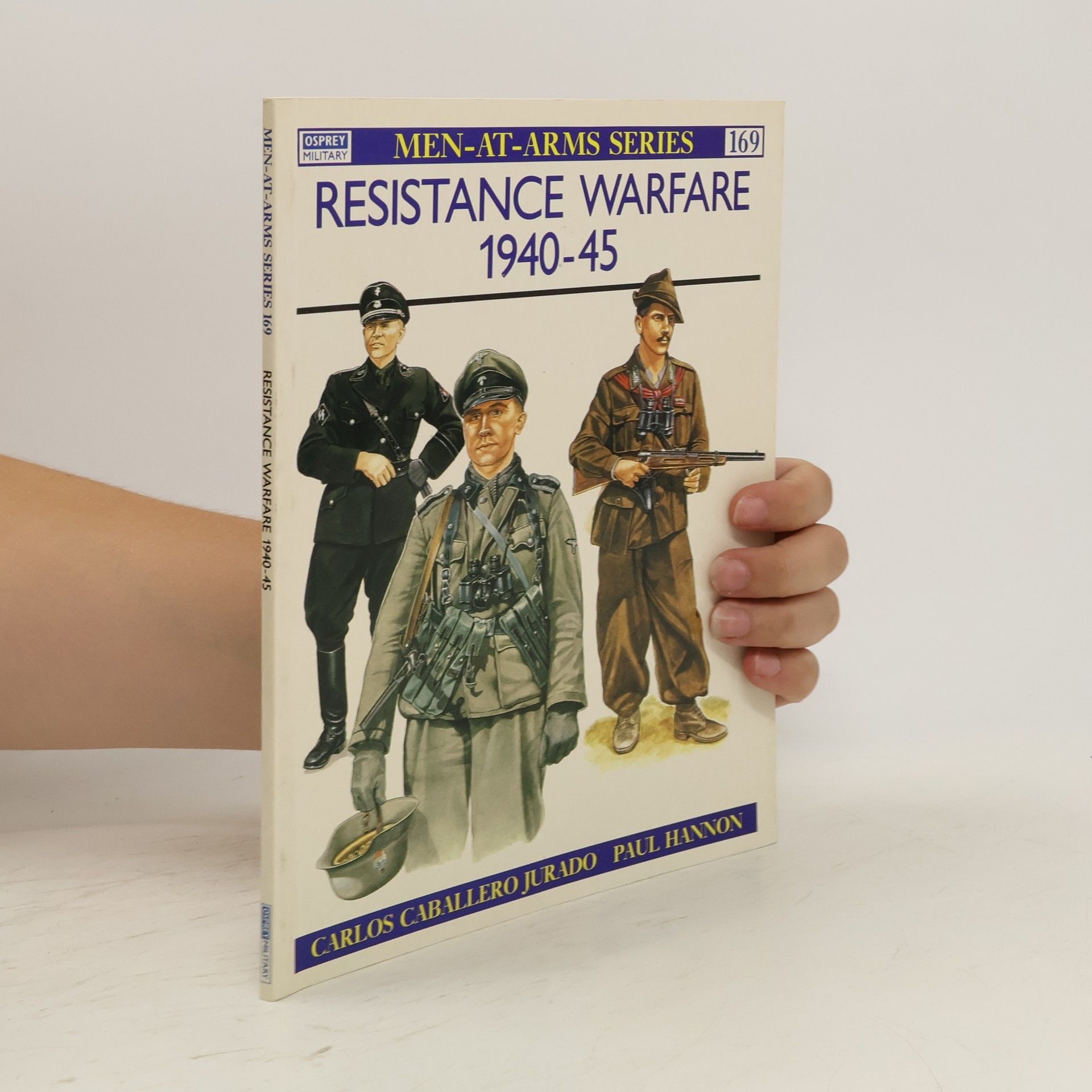Alternative look at the efforts to lift one of the most famous sieges of the Second World War. Focus on artillery used.
Carlos Caballero Jurado Livres






The occupation of Western Europe by the Wehrmacht brought about the birth of resistance movements in all the countries affected, as well as collaborationist movements directly opposed to the resistance. In effect, the war against Germany became a civil war within each country. Sought out by the Hohere SS und Polizeiführer ('High Command of the SS and Police') and often aided by the British Special Operations Executive, the Western European Resistance centred largely on espionage and intelligence-gathering. A companion volume to Men-at-Arms 142: Partisan Warfare 1941-45, this book explores the history of resistance warfare during World War II in Norway, Denmark, Holland, Belgium, France and Italy.
The Condor Legion: German Troops in the Spanish Civil War
- 64pages
- 3 heures de lecture
Osprey's examination of German forces prior to World War II (1939-1945). The Condor Legion was the expeditionary force of soldiers and airmen sent by Hitler to aid Franco's Nationalists in the Spanish Civil War (1936-1939). The Germans used the war as an opportunity to develop equipment and tactics, and their force included not only instructors, but also combat units of artillery, tanks and aircraft. These units tested guns, tanks and planes and perfected techniques which were used in the 1940 Blitzkrieg. Many of the officers prominent in the early campaigns of World War II won their first successes in Spain. This book details the Legion and its unique uniform and insignia.
The German Freikorps
- 64pages
- 3 heures de lecture
Osprey's examination of German troops in the post-World War I (1914-1918) period. The troops returning home to Germany after the 1918 Armistice found their country riven by internal unrest, and its eastern borders threatened. Though reluctant to support the new Republic, the many Free Corps formed by ex-Imperial soldiers fought furiously against Communist revolutionaries at home and Polish and Bolshevik Russian pressure on the frontiers. Later providing much of the manpower for the new Reichswehr, the Free Corps would have strong links with the nascent Nazi Party. This concise account of a little-known but central episode in the history of 20th century Germany is illustrated with rare photographs, and ten colour plates showing unprecedented details of uniforms and insignia.
This history of the Ukrainian Galician Division, raised around 1943-44, details the Division's war record, supplemented by coverage of the antecedent units and the political and historical background of the difficult position in which the Ukrainians found themselves. Includes b&w photographs and maps. Distributed by ISBS. Annotation c. by Book News, Inc., Portland, Or.
Defensa antiaérea alemana : la Flak
- 184pages
- 7 heures de lecture
Durante la II Guerra Mundial, la aviación se convirtió en un arma poderosa y devastadora, por lo que la defensa antiaérea alemana, la Flakartillerie, registró un crecimiento excepcional, convirtiéndose en uno de los cuerpos más importantes de la Wehrmacht.
La Guardia Pretoriana del III Reich
- 182pages
- 7 heures de lecture
Dywizje pancerne tworzyły złowieszczą pięść nazistowskiej III Rzeszy przeznaczoną do podboju sąsiad�w w ramach strategii wojny błyskawicznej.Odegrały dużą rolę w przełamaniu obrony w przełamaniu obrony przeciwnika na polach bitewnych w Polsce, Francji i w początkowej fazie wojny zw Związkiem Radzieckim. Z czasem przeciwnik dostosował się do taktyki niemieckiej.Bitwa pod Kurskiem okazała się największą bitwą pancerną w dziejach świata i wielkim cmentarzyskiem czołg�w obu stron.
Narodowosocjalistyczna Niemiecka Partia Robotnik�w przeszła do europejskiej historii wsp�łczesnej jako siła polityczna nosząca znamiona organizacji militarnej. Boj�wki nazistowskie przysparzały owej partii atrakcyjności oraz przyciągały do niej weteran�w I wojny światowej. Charakteryzująca je brutalność oraz zdyscyplinowanie pozwalały im na zawładnięcie ulicami i wykorzystanie kryzysu gospodarczego do podjęcia marszu po władzę. Były one odpowiedzialne za wpajanie wartości mlitarnych młodemu pokoleniu oraz całemu niemieckiemu społeczeństwu, co stanowiło zarazem rodzaj psychologicznego przygotowania do nadciągającej nowej wojny.